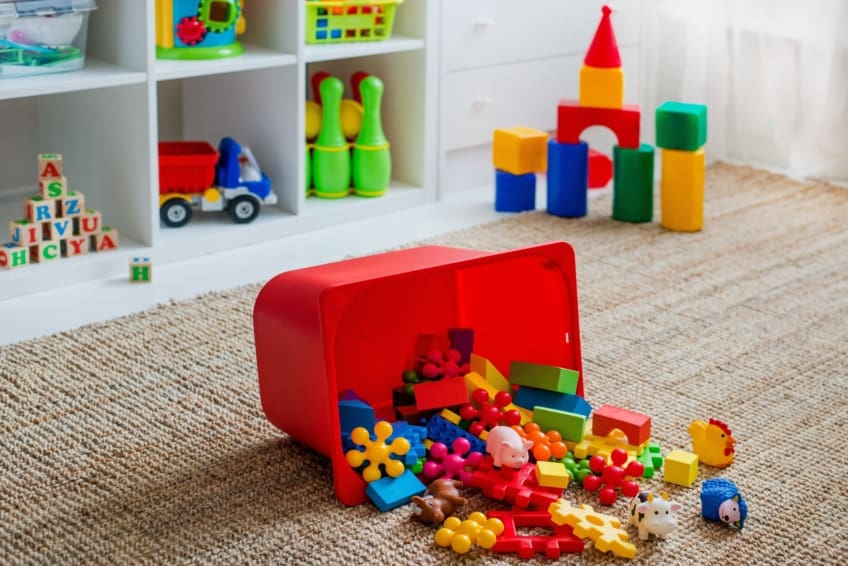
Organizing your home—and even your car—safely for children is a constant effort. As your family grows, it’s important to reassess your space and make sure it’s as safe as possible. One of the biggest challenges of keeping a safe home is storage.
Path to improved safety
- Step one: Walk into each room, assess your current storage methods, and rethink any areas of concern—especially if you have added a child to your family or if your children are getting older and taller. For example, if you had a baby and were able to keep the kitchen knives in a drawer before the baby was mobile, you will have to find another, higher location. This is true even if you use drawer locks. Sometimes those tools can break, depending upon the type of material they are made from. Consider moving the kitchen knives to a tightly closed box in a top cabinet. This may mean moving something else that is currently in a top cabinet. But thinking creatively can help.
- Step two: Think about whether your current storage methods are effective. For example, child safety experts recommend storing common household products or cleaning supplies, such as laundry and dishwashing pods, in their original packaging and in a place that can’t be seen or touched by a child. Many of these things are both choking and poison risks. Also, always keep medicine in the original container and away from children.
- Step three: Look at kids’ bedrooms. You may have safely stored toys and baby care items in the bedroom of your newborn. But what happens when you have more than one child? What if they share a bedroom? Your older child may want to play with toys that are choking hazards for newborns. Work with your older child to come up with a plan to play with and store their toys away from their younger sibling. It’s important to monitor this regularly.
- Step four: If you have a home office, look at your space. With a rise in telecommuting, many parents have a dedicated space in which to work. This may be an open space or a room with a door. Either way, we sometimes forget to childproof those rooms. You may have supplies, such as paper clips, staplers, scissors, and letter openers loosely stored on top of your desk or in a drawer without child locks. Find a safe place for those items. This is especially true for parents who work from home and have the children at home with them. Sometimes we get distracted trying to balance childcare and work, which means we might leave things unattended.
- Step five: Don’t forget your car. We often use our cars as an extension of our homes. We may keep medicines, small toys, and food that poses a choking hazard in our cars. Plan to safely store your needs in a childproof container and away from your child’s reach. While you are driving, your child may reach for those items. Also, remember to pull your car into a safe space if you need to get something for your child. Never attempt to open containers while driving.
Things to consider
Popular social media trends often post decorative methods (glass jars, fabric bins, etc.) for storing items. It may look pretty, but it might not be safe. In fact, research from the American Cleaning Institute shows unsafe storage of liquid laundry packets was portrayed nearly 800,000 times over a four-year period on popular social media platforms. Alarmingly, in 92% of the storage-related posts, there was no mention of the child safety dangers that can come with keeping liquid laundry packets outside of their original containers.
Child safety experts encourage parents to follow the “Store Not Décor” approach. Putting laundry detergent pods in a see-through container or liquid laundry detergent in a glass bottle that can easily be opened by a child is dangerous. Not only do the colorful pods attract the child’s attention, but a decorative container also doesn’t have a childproof lid to protect curious kids.
Resources
American Cleaning Institute Clean First Steps Safe Storage Resource
![]()
Copyright © American Academy of Family Physicians
This information provides a general overview and may not apply to everyone. Talk to your family doctor to find out if this information applies to you and to get more information on this subject.




